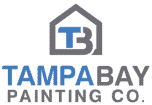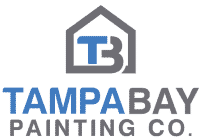
All That You Want to Know About Residential Painting Cost
A fresh coat of paint can liven up your enclosure like nothing else. However, it can turn into a nightmare if you do not consider the factors and aspects that affect or influences the cost and the execution of the project. Whether you are planning to revamp your interiors or are about to move to a new address, having a prior idea about residential painting prices can help you make the right choice.
The average residential painting cost can range between $950 to $2900. The cost can, however, fluctuate depending on the materials used and the size of the house among other factors. If you want to walk the DIY path, you can save on labor charges, but it will lack professional finesse.
Residential Painting Prices for the Interior of a House
To ascertain residential interior painting prices for a particular house. You can arrive at the total cost either by the room type or the area (by sq. footage) covered.
-
By Room
The residential painting cost of a home depends on the room type and the fixtures and appliances that need to be paint. An average-sized living room can cost you between $900 – $2000. The cost of painting a bedroom and kitchen are almost similar, between $300 – $750. The residential painting rates for a moderately-sized washroom would be between $150 – $300.
-
By Covered Space (sq. foot)
You need to measure the total area of your home in sq. feet and multiply it by the residential painting cost per square foot to arrive at the total cost. The average cost is $3.50 per sq. foot, and the residential painting cost of a 2000 sq. foot house would be $7000.
DIY Residential Interior Painting Cost
If you decide to take on the task yourself, you can save money. A budget of $200 – $300 inclusive of the paints, all materials, and equipment is a fair estimate. Depending on the volume of work and your painting expertise. The interior painting of your house can take from a day to a few days. It is, however, always advisable to appoint professional painters. Not only do they apply paints perfectly at the corner and the edges but ensure an overall smooth and clean finish. They finish jobs faster and charge an hourly rate of $20 – $50.
What are the Factors Affecting Residential Painting Prices?
The residential interior painting cost varies across homes and is dependent on several factors discussed below:
Size of the home
While a larger house would entail higher costs there are other factors that are related to house size that has to be taken into consideration. If the house has several levels to be paint there would be additional labor and transporting costs of materials across different floors.
Paint type
You have a whole gamut of paints to choose from. Not all of them cost the same. Matte or satin paints are more expensive than glossier ones. The basic synthetic coloring variant would cost between $20 – $30 per gallon. The high-end designer paint can cost around $100 per gallon.
Range of materials
There are certain materials apart from sprayers and ladders that needs to be bought separately for each project. So, the quote would include the price of rollers, tapes, drop cloths, paint brushes, paint pans, etc. You may ask your painter if you could procure these items for the job and look for a cheaper source to get these supplies.
Labor charges
Know that the painting companies would always quote the total project cost and never the actual hourly residential painting rates. The hourly cost of a painter is usually between $20 – $50. In most cases, the painter charge by the floor or wall sq. footage.
Shifting furniture
You can save additional labor charges if the furniture is moved either at the center or out of the room before the start of the paint job. The painters usually add charges if they have to do it.
Repairing walls
It is imperative to fix the stains, dents, and scratches on the wall before applying paint, even if that means incurring an extra bit of cost.
Additionally, if you are planning for an accented or textured finish it would add to your project cost. For textured walls, you can expect a rise of 50% in the cost and for accent walls, the cost would be about 20% – 30% more. The escalations are inclusive of extra labor and materials needed for the job.
Final Thought
While a DIY house interior painting job may sound exciting and spell less expensive, a professional painter is the best option to paint your home. Not only do they have the expertise to do the job appropriately. They know the suitable materials to use and have skills to enhance the quality of the outcome. Hiring professional painters is the best bet since they assure you an incomparable finish no DIY homeowner-painter can match.


